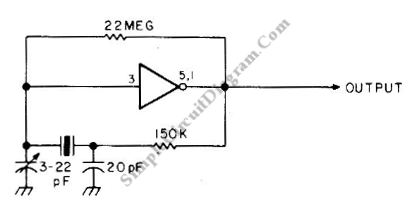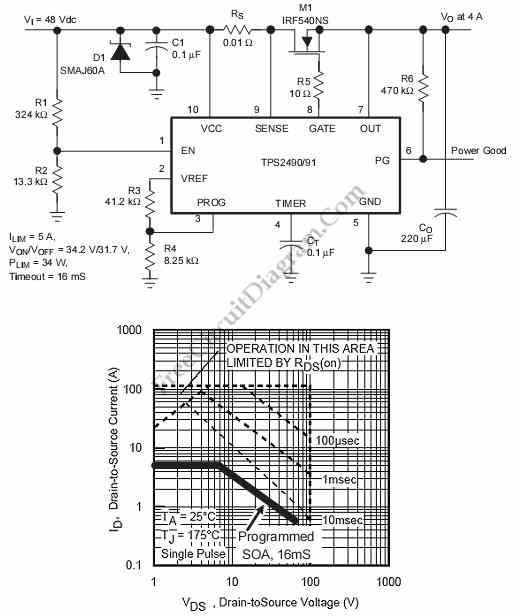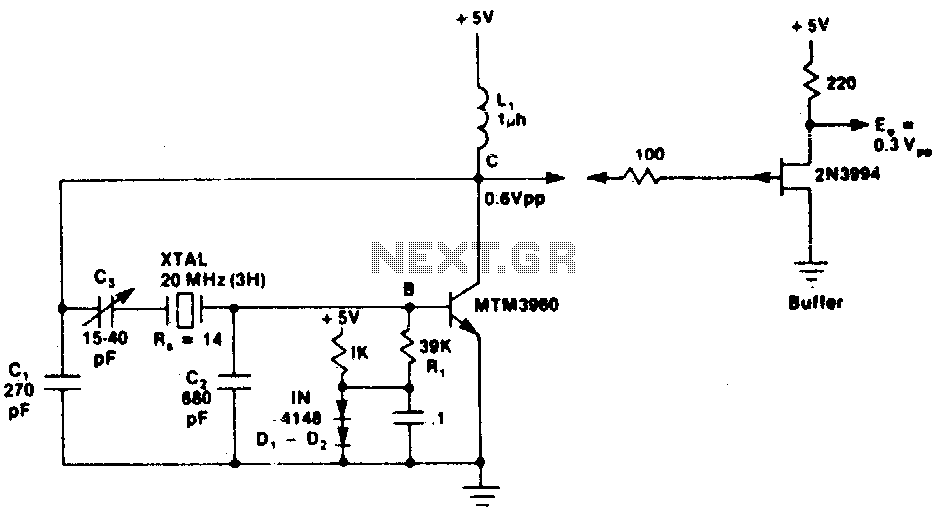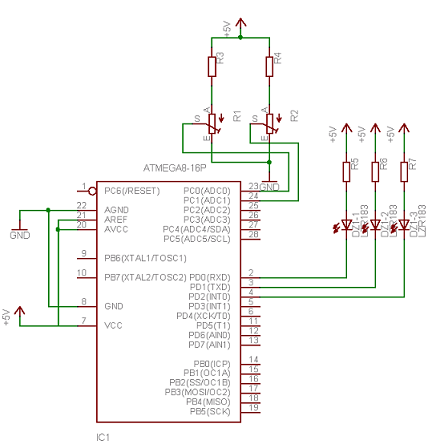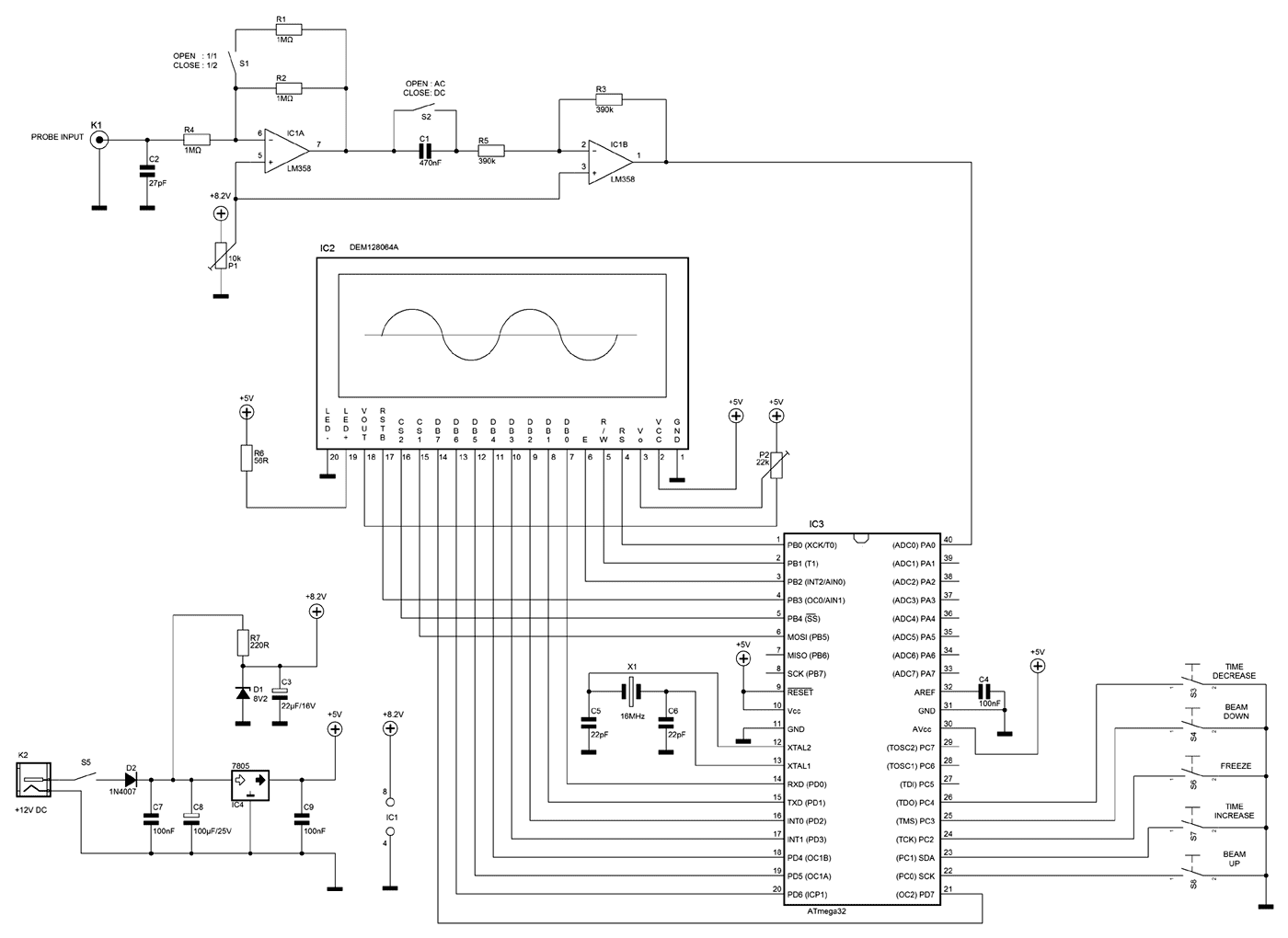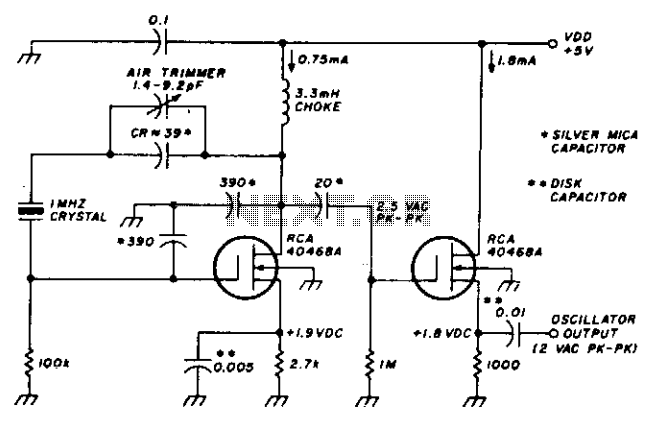
Voltage Controlled Oscillator using NE555

A voltage-controlled oscillator using the NE555. This circuit is commonly referred to as a voltage-to-frequency converter because the output frequency is altered by varying the input voltage. As previously noted, pin 5 serves as the voltage control terminal, which is responsible for managing the edge and trigger levels. Typically, the control voltage is set at +2/3 VCC due to the internal voltage divider. However, an external voltage may be applied directly to this terminal or through a potentiometer, as shown in the accompanying figure. By adjusting the potentiometer, the control voltage can be varied. The voltage across the timing capacitor, which fluctuates between +Vcontrol and ½ Vcontrol, is also illustrated in the figure. When the control voltage is increased, the capacitor takes longer to charge and discharge, resulting in a decrease in frequency. Thus, the frequency is modified by changing the control voltage. The control voltage can be generated through a potentiometer or may originate from a transistor circuit, operational amplifier, or another device.
The NE555 timer is a versatile integrated circuit widely used in various applications, including oscillators, timers, and pulse generation. In the context of a voltage-controlled oscillator (VCO), the NE555 can be configured in astable mode, allowing it to generate a continuous square wave output whose frequency is dependent on the voltage applied at pin 5.
The circuit typically consists of the NE555 timer, a timing capacitor (C1), two resistors (R1 and R2), and a potentiometer (P1) to adjust the control voltage. The resistors R1 and R2 form a voltage divider that sets the threshold levels for the NE555. The timing capacitor C1 determines the charge and discharge time, which directly influences the output frequency.
When a voltage is applied to pin 5, the internal voltage divider of the NE555 adjusts the timing intervals based on the control voltage. The relationship between the control voltage and the output frequency is inversely proportional; as the control voltage increases, the frequency decreases due to the longer charge and discharge times of the capacitor.
It is essential to select appropriate values for R1, R2, and C1 to achieve the desired frequency range. The output frequency (f) can be calculated using the formula:
\[ f = \frac{1.44}{(R1 + 2R2) \times C1} \]
In this configuration, the potentiometer allows fine-tuning of the control voltage, facilitating precise frequency modulation. The output from the NE555 can be utilized to drive loads directly or can be fed into subsequent stages of a circuit, such as filters or amplifiers, depending on the application requirements.
This voltage-controlled oscillator circuit is particularly useful in applications requiring frequency modulation, such as in communication systems, signal generators, and audio synthesis, where varying the frequency in response to an input control voltage is necessary.A voltage-controlled oscillator using NE555 The circuit is usually known as a voltage-to-frequency converter as a result of the output frequency will be modified by changing the input voltage. As mentioned in previous blog posts, pin 5 terminal is voltage control terminal and its function is to manage the edge and trigger levels.
Normally, the con trol voltage is +2/3VCC because of the inner voltage divider. However, an external voltage will be applied to the current terminal directly or through a pot, as illustrated in figure, and by adjusting the pot, control voltage can be varied. Voltage across the timing capacitor is depicted in figure, that varies between +Vcontrol and ½ Vcontrol.
If control voltage is increased, the capacitor takes a extended to charge and discharge; the frequency, therefore, decreases. so the fre quency will be modified by changing the control volt age. Incidentally, the control voltage is also created offered through a pot, or it should be output of a transistor circuit, op-amp, or another device.
🔗 External reference
The NE555 timer is a versatile integrated circuit widely used in various applications, including oscillators, timers, and pulse generation. In the context of a voltage-controlled oscillator (VCO), the NE555 can be configured in astable mode, allowing it to generate a continuous square wave output whose frequency is dependent on the voltage applied at pin 5.
The circuit typically consists of the NE555 timer, a timing capacitor (C1), two resistors (R1 and R2), and a potentiometer (P1) to adjust the control voltage. The resistors R1 and R2 form a voltage divider that sets the threshold levels for the NE555. The timing capacitor C1 determines the charge and discharge time, which directly influences the output frequency.
When a voltage is applied to pin 5, the internal voltage divider of the NE555 adjusts the timing intervals based on the control voltage. The relationship between the control voltage and the output frequency is inversely proportional; as the control voltage increases, the frequency decreases due to the longer charge and discharge times of the capacitor.
It is essential to select appropriate values for R1, R2, and C1 to achieve the desired frequency range. The output frequency (f) can be calculated using the formula:
\[ f = \frac{1.44}{(R1 + 2R2) \times C1} \]
In this configuration, the potentiometer allows fine-tuning of the control voltage, facilitating precise frequency modulation. The output from the NE555 can be utilized to drive loads directly or can be fed into subsequent stages of a circuit, such as filters or amplifiers, depending on the application requirements.
This voltage-controlled oscillator circuit is particularly useful in applications requiring frequency modulation, such as in communication systems, signal generators, and audio synthesis, where varying the frequency in response to an input control voltage is necessary.A voltage-controlled oscillator using NE555 The circuit is usually known as a voltage-to-frequency converter as a result of the output frequency will be modified by changing the input voltage. As mentioned in previous blog posts, pin 5 terminal is voltage control terminal and its function is to manage the edge and trigger levels.
Normally, the con trol voltage is +2/3VCC because of the inner voltage divider. However, an external voltage will be applied to the current terminal directly or through a pot, as illustrated in figure, and by adjusting the pot, control voltage can be varied. Voltage across the timing capacitor is depicted in figure, that varies between +Vcontrol and ½ Vcontrol.
If control voltage is increased, the capacitor takes a extended to charge and discharge; the frequency, therefore, decreases. so the fre quency will be modified by changing the control volt age. Incidentally, the control voltage is also created offered through a pot, or it should be output of a transistor circuit, op-amp, or another device.
🔗 External reference
